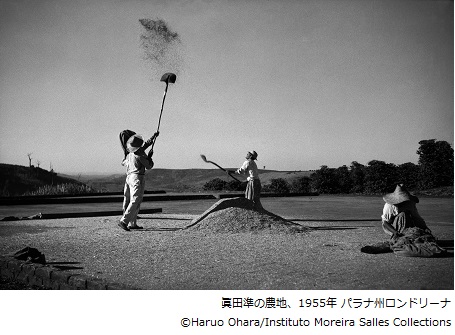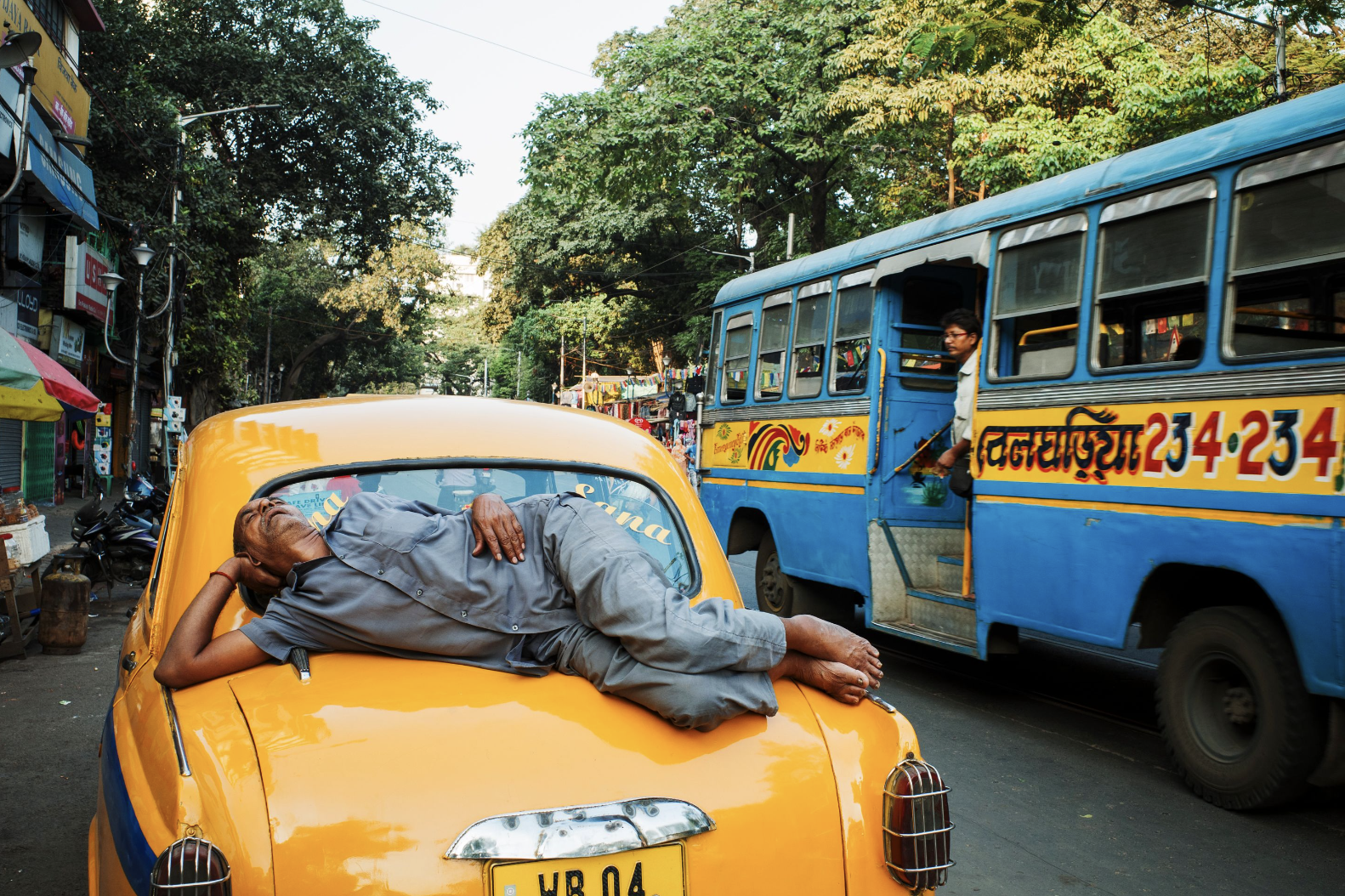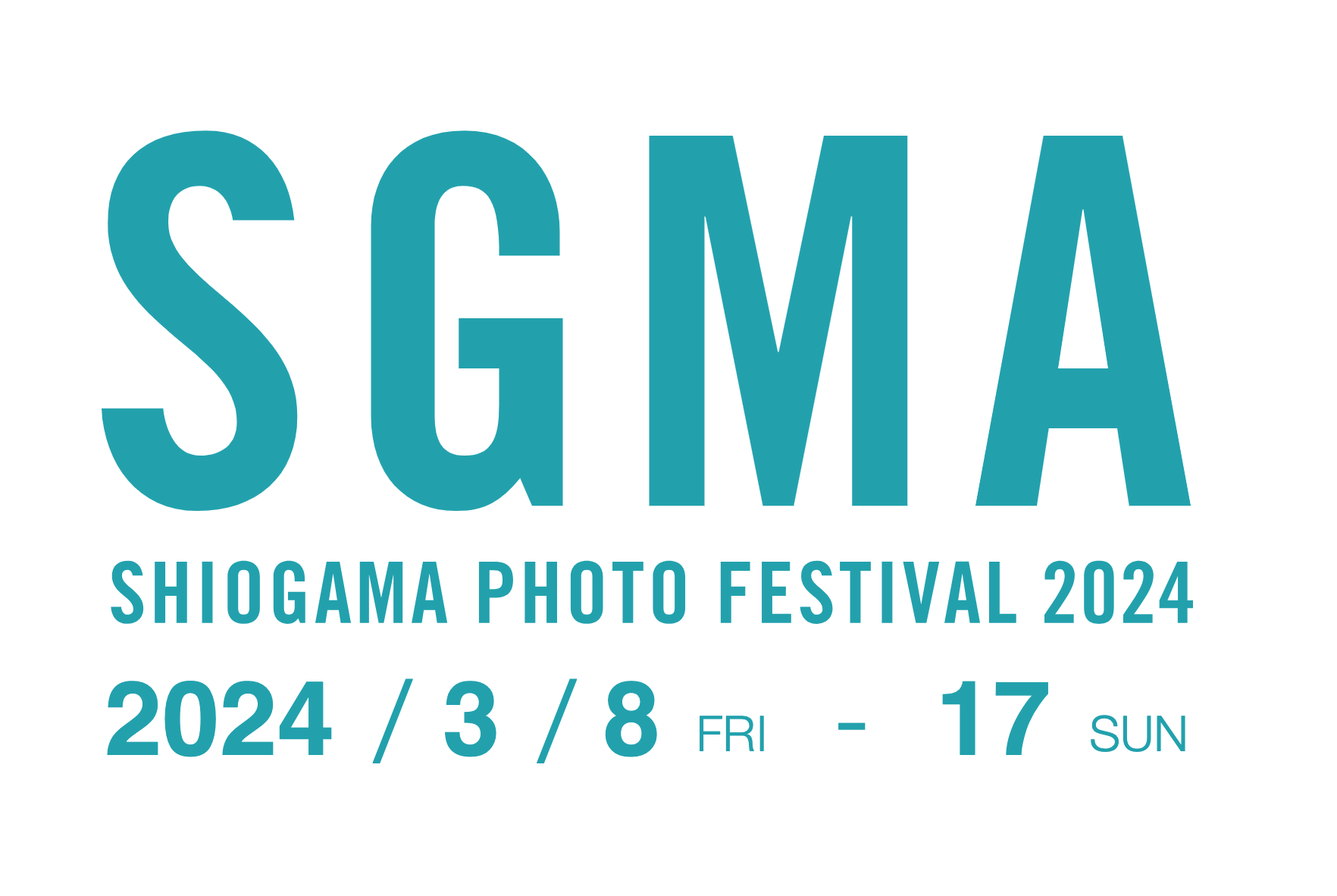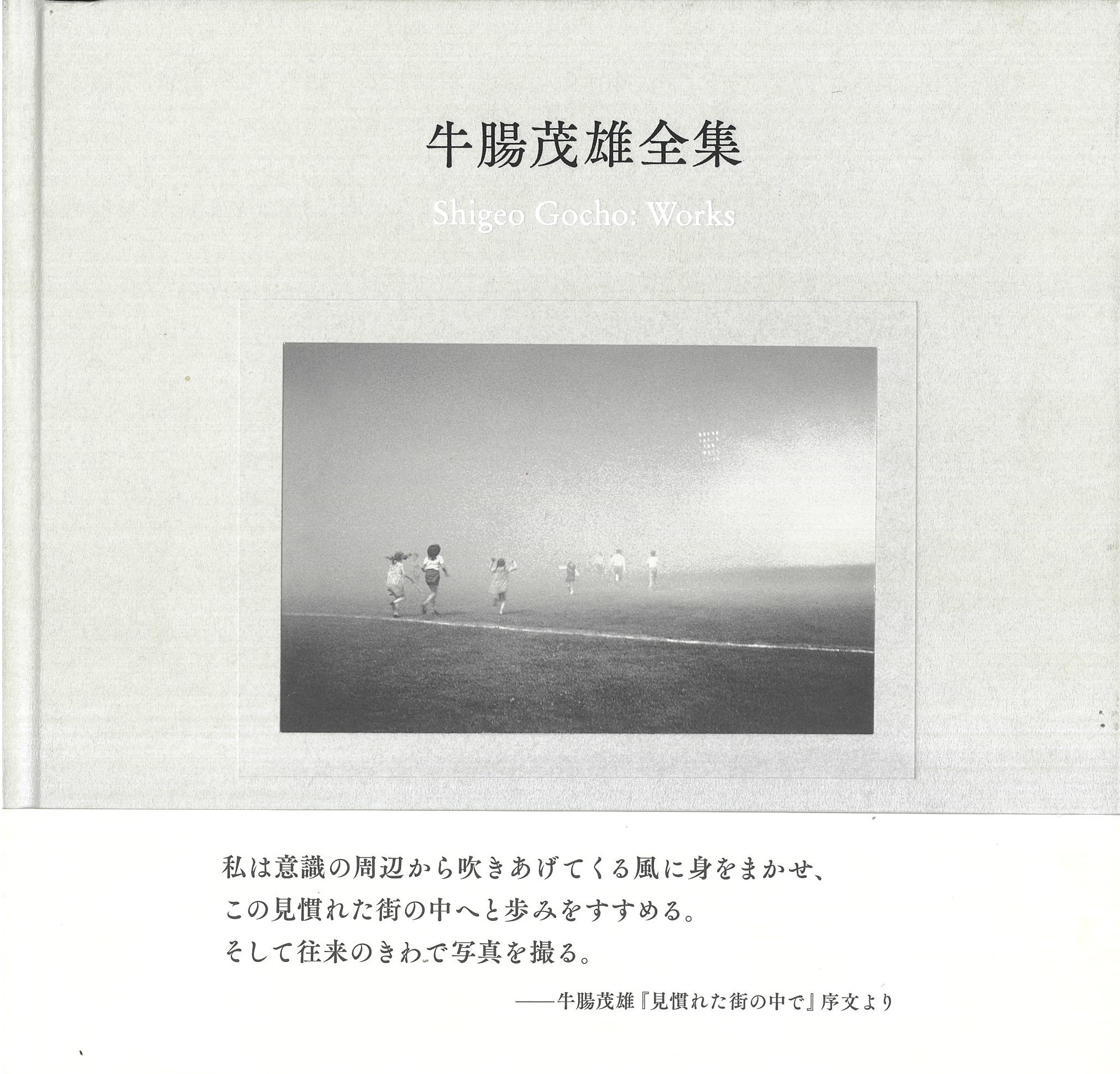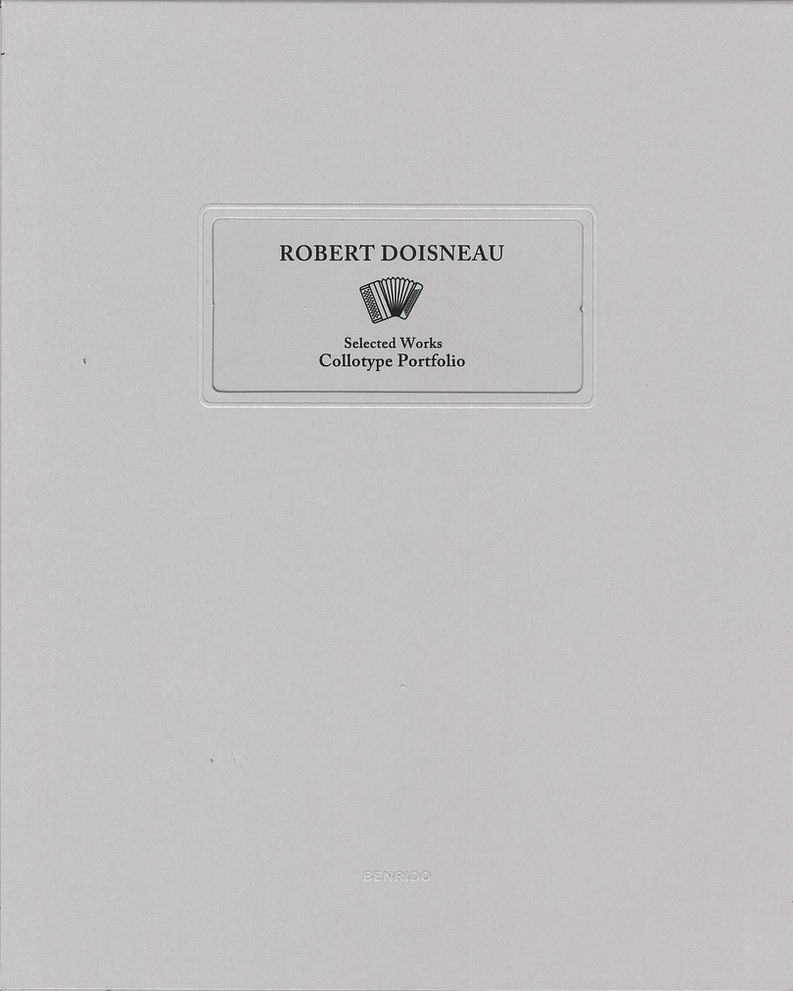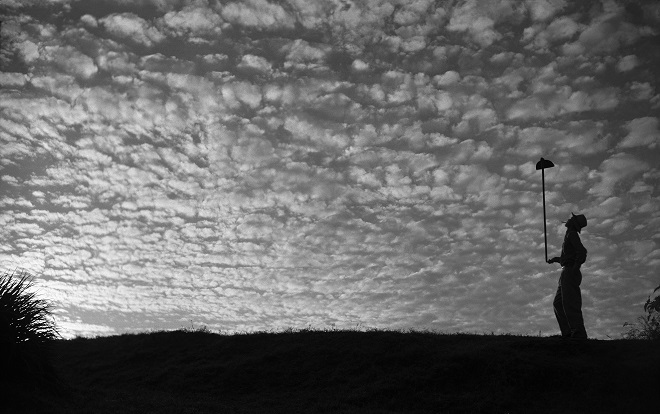
©Haruo Ohara/Instituto Moreira Salles Collections
Agradeça à semente de ontem
「昨日まかれた種に感謝 今日見る花を咲かせてくれた」―大原治雄のメモより
展覧会名:大原治雄「ブラジルの光、家族の風景」
会期:10月22日(土)~12月4日(日)
休館日:毎週火曜日
会場:清里フォトアートミュージアム
〒407-0301 山梨県北杜市高根町清里3545-1222
TEL: 0551-48-5599
URL:http://www.kmopa.com/
主催:清里フォトアートミュージアム、モレイラ・サーレス財団、駐日ブラジル大使館
後援:山梨県教育委員会(予定)、北杜市教育委員会(予定)
企画協力:コンタクト
開館時間:10:00~18:00 12月1日~4日は10:00~17:00(入館は閉館30分前まで)
入館料:一般800円(600円)/学生600円(400円)/中・高生400円(200円)
友の会・会員は無料。( )内は20名様以上の団体料金。家族割引あり(2名様以上~6名様まで)。
●開催趣旨
大原治雄「ブラジルの光、家族の風景」は、日系移民として高知県からブラジルへわたり、アマチュア写真家として活動し、ブラジル国内で大変高い評価を得た“知られざる巨匠”大原治雄(おおはら はるお)の日本での大規模な回顧展です。
日本からブラジルへ、最初の移民船「笠戸丸」が出航したのは、1908年(明治41年)でした。大原はその翌年、1909年、高知県吾川郡三瀬村石見(現・いの町)に生まれました。1927年、17歳で家族らと集団移民としてブラジルに渡り、当初はサンパウロの農園で農業労働者として働きます。その後、未開拓の地、パラナ州ロンドリーナ(リオデジャネイロから約800キロ)に最初の開拓者の一人として入植します。
24歳で結婚。それを機に、大原は、人生の大切な日の記録を残すことのできる写真に興味を持ち、4年後に小型カメラを購入します。初めて撮影したのは《オレンジの木の隣にいる幸(こう)》(幸は大原夫人)でした。以来、農作業の合間に写真を撮るようになります。
独自の研究を重ねて技術を習得し、やがて1951年(41歳)にはサンパウロの有名カメラクラブの会員となり、国内外の写真展に出品するほどとなります。1970年代初頭からは名前も知られ始め、地元の新聞への掲載、個展開催、フォトフェスティバルへの出品など、徐々に高い評価を受けるようになりました。
大原にとって写真とは-本展を象徴する作品
大原は、ブラジルへ渡ってから70年間、一日も欠かさずに日記を書き続けました。下記はその一部です。
時々灰色の雲が通ると大粒の水滴が落ちる
太陽にてらされて まっ白い糸が
天と地をつなぐやうに思える
(大原治雄日記より)
特筆すべきは、優れた表現力ですが、大自然を相手に一喜一憂する日常を書き綴ることによって、不安に波立つ心を鎮めていたのかもしれません。ある年、霜害で農園のコーヒーの木が枯れてしまい、一家は10年間厳しい生活を送りました。その間にも、大原は、頭を抱えた自分自身のポートレイトを撮影し、ユーモアを感じさせる余裕さえ見せています。そして、再び農業が軌道に乗った後に撮影したのが、写真:)朝の雲、1952年 パラナ州テラ・ボア、大原のセルフポートレイトです。
画面を広く覆う朝の大空は、原生林を切り開いたからこそ現れた「空」と「水平線」であり、大原はこれを繰り返し撮影しています。開拓の象徴である広い空を背景に、くわえ煙草で、指先で鍬を操り、軽々とバランスを取る大原が、「天と地をつなぐやう」な姿として、撮影されています。苦難の日々を乗り越えた喜びに溢れる姿ですが、大原自身は画面右端に立っていることから、大原は、この写真の主役をブラジルの大地と空と捉えていることがわかります。本展を象徴する作品です。
大原の写真は、おおらかな大地と農作業の喜び、家族へ注がれる慈愛の眼差しに満ちています。また、スナップのような軽やかな印象の作品も、実は、自然光の取り入れ方、人物の動きや構図などが、綿密に計算されていることが見て取れ、大原の優れた観察力と表現力が感じられます。
また、近代写真の実験的精神をふんだんに取り入れながら、日常生活の中に「美」を見出し、独自の世界を作り上げようとする真摯な取り組みには、新しいものへの挑戦を恐れない精神の強さを感じることができます。人生の大切な時間や身の回りのものごとを、丁寧な手法で、写真芸術として開花させ、再び家族と共有する楽しみこそが、大原の生きる希望だったのではないでしょうか。
本展のみどころ-180点のモノクロ作品が語るもの
大原は、開拓したロンドリーナの町の発展は記録しましたが、過酷な労働や戦時中の混乱は、いっさい撮影しませんでした。あくまでも生活に根ざし、アマチュアの“農民写真家”を貫いたのです。農業を楽しみ、命を育む大地の恵みに感謝し、そして、新しい物事を学び、想像力を失わないこと-それが、写真を通して、大原が子どもたちに伝え、残したかったことかもしれません。大原の生涯を支えた写真が湛える豊かな表現力と深い精神性は、時代を超えて、人々の心に響くことでしょう。
幸夫人が1973年に亡くなると、大原は、9人の子どもたち一人ひとりのために、過去の膨大なネガを見直して編集し、家族の歴史を一冊にまとめた「アルバム帖」を作成します。1年間暗室にこもって一冊あたり約300枚もの写真を焼き、貼り付け、9冊を仕上げました。本展では、その貴重な「アルバム帖」も展示いたします。
1999年、大原は家族に見守られながら、89歳で永眠します。治雄と幸夫人に始まった大原家は、現在70人を超す大家族となっています。2008年、日本人のブラジル移民100周年記念の年に、遺族により、オリジナル・プリント、約2万枚のネガフィルム、写真用機材、蔵書、日記など一連の資料が「モレイラ・サーレス財団」に寄贈されました。本展では、同財団のコレクションよりモノクロ作品約180点を展示いたします。
*清里フォトアートミュージアム発行のPRESS RELEASEより転載させていただきました。
*記載事項は2016年8月現在のものです。内容が変更になる場合もございます。
大原治雄作品1(Ohara Haruo Works 1)
大原治雄作品2(Ohara Haruo Works 2)
ニュースリリース(PDF)はこちらへ
●大原治雄 Haruo Ohara(1909-1999)略歴
1909年11月、高知県吾川郡三瀬村(現・いの町)に農家の長男として生まれる。1927年、17歳で家族と移民としてブラジルに渡り、はじめサンパウロ州のコーヒー農園で働いた後、1933年、パラナ州ロンドリーナへの最初の開拓団として入植。1938年に小型カメラを手に入れ、コーヒーや果樹栽培の農作業の合間に趣味で撮影をはじめる。独自に研究を重ねながら技術を習得し、次第にカメラに没頭。1951年にはロンドリーナ市街地に生活を移し、「フォトシネクラブ・バンデイランチ」(サンパウロ)に入会。農業経営の一方、60年代後半まで国内外のサロンに積極的に参加。当時は無名のアマチュア写真家だったが、1970年代はじめから徐々に知られるようになり、地元新聞などで紹介される。1998年、「ロンドリーナ国際フェスティバル」および「第2回クリチバ市国際写真ビエンナーレ」で、初の個展「Olhares(眼差し)」展が開催され、大きな反響を呼ぶ。1999年、家族に見守られながらロンドリーナで永眠。享年89。2008年、日本人ブラジル移民100周年の機会に、遺族により写真と資料の一式が、ブラジル屈指の写真史料アーカイヴズであるモレイラ・サーレス財団に寄贈された。
*ブラジルの光、家族の風景-大原治雄写真集(発行:サウダージ・ブックス)大原治雄略歴より転載させていただきました。
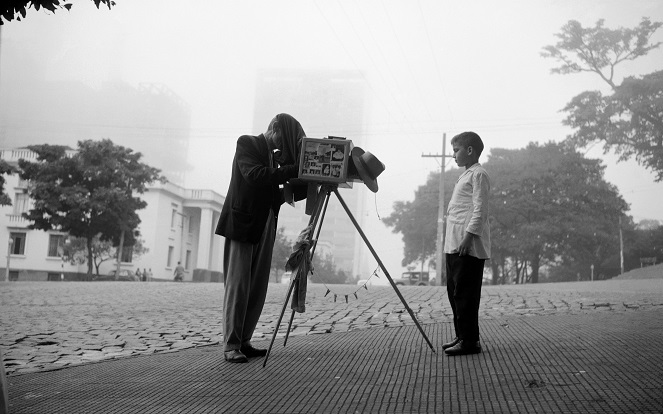
1958年 パラナ州ロンドリーナ ©Haruo Ohara/Instituto Moreira Salles Collections
Agradeça à semente de ontem
Thankful for the seed cast yesterday;
It is what made today’s flower bloom
– from Ohara’s notebook
Exhibition of Photographs by OHARA Haruo
The Light of Brazil – Family Sceneries
Period:October, 22. 2016 (Sat.) – December, 4. 2016 (Sun.)
Venue:Kiyosato Museum of Photographic Arts
3545-1222 Takanecho Kiyosato, Hokuto, Yamanashi Prefecture, 407-0301 JAPAN
URL: http://www.kmopa.com/
TEL: 0551-48-5599 FAX: 0551-48-5445
Organization:Kiyosato Museum of Photographic Arts, Instituto Moreira Salles, The Embassy of Brazil Tokyo
Support:The Yamanashi Prefectural Board of Education, The Hokuto Municipal Board of Education
Planning:Contact Co., Ltd.
Opening Hours:10:00 – 18:00 (last admission 17:30); 10:00 – 17:00 (last admission 16:30) between December 1., 2016 – Dezember 4., 2016; closed on Tuesdays
Admission: Adult 800 ¥ (600 ¥), University Students 600 ¥ (400 ¥), High-school and Junior High-School Students 400 ¥ (200 ¥).
( )Prices in brackets are for groups of 20 or more.
*Free for members of the Friends of the K・MoPA
*Reduction available for families (2 – 6 persons)
The Light of Brazil – Family Sceneries is a large-scale retrospective of Ohara Haruo, highly regarded critically yet publicly still mostly unknown Japanese-Brazilian amateur photographer.
It was 1908 when the Kasato Maru, carrying the first set of 781 contracted workers, set sail to Santos, Brazil. Ohara Haruo was born 1909, the following year, in Misemura (present-day town of Ino) in the district of Agagawa, located in the prefecture Kochi on the south coast of Shikoku. In 1927, at the age of seventeen, he and his family too immigrated to Brazil as part of a larger group of Japanese immigrants. After arriving in Brazil he first worked as farm laborer in São Paulo and later moved to the undeveloped areas of Londrina in the state of Paraná as one of the first to settle there. At the age of 24 he married. It was his wedding that made him think about ways to record important events in his life and finally led him to buy his first camera a few years later. It does not surprise, thus, that his first photograph depicts his wife Kou, next to an orange tree. From then on Ohara continued to make photographs when he had time to spare from work at his farm. He studied and mastered photographic technique on his own, gradually spending more and more time with his camera and in 1951 eventually became a member of the Photo Cinema Club Bandeirante, a prestigious photographic association, and began to exhibit works at home and abroad. From the early 1970s on he started attracting the attention from local newspapers and subsequently became known to a broader public through articles, individual exhibitions, and participations in photo festivals for which he received considerable critical acclaim.
From the day he left Japan, Ohara kept a diary which he continued to write every day for the remaining 70 years of his life. In it we find quotes such as the following:The weather, just like cats, capricious. Rain. Gray clouds passing by. Dropping beads of water. Illuminated by the sun, a sparkling white string. Seeming to connect heaven and earth.These lines demonstrate the liveliness of Ohara’s artistic expressions, yet they also hint at the close relationship that for Ohara existed between poetic reflection and everyday life. In other words, writing as well as photographing were not only abstract ways of artistically expressing himself, but also practices to deal with concrete hardships. We can see that, for instance in the self-portraits he took during the 1940s, a time in which his coffee plants dried up and pushed the family to its existential limits. For in these self-portraits where we find him burying his head in his hands, there still remains a sense of humor that bespeaks of self-ironical distance; a self-distantiation that may have helped him get over these hard times. Similarly, the photograph Morning clouds (see above) taken in 1952 after his farm had finally recovered from the previous troubles, with its broad sky and a playful Ohara, can be said to bespeak of his relief.
Ohara continued to photograph all encompassing landscapes such as the one in this image, landscapes structured by a sky and a horizon that Ohara himself opened up by developing the primeval forests of Londrina. Against the background of this wide sky – a symbol for development – we find Ohara balancing a hoe on the tip of his fingers, himself “seeming to connect heaven and earth”. This is a figure full of joy over having overcome previous hardships. Yet, it is not him but the vast land of Londrina that takes the center stage, as Ohara suggests by positioning himself on the right of this image – making it into a representative photograph not only of Ohara’s artistic practice but also of this exhibition.
Ohara’s photographs are filled with Brazil’s generous land, the joy he found in farming and a tender, loving gaze towards his family. Many of his photographs at first sight might appear to us as spontaneous snapshots but on a closer look it becomes obvious that his images – the use of natural light and the composition of his objects – are carefully planned and structured, thus, bespeaking of Ohara’s technical skills as well as his ability to observe and his expressiveness.
Furthermore, in his genuine effort to create an original world of expression by portraying the beauty within everyday life through techniques deeply embedded within the concepts of modern experimental photography, we can discover Ohara’s fearlessness with regards to trying out new things. Judging from his photographs one is tempted to say that to carefully depict the important moments of life and the things dear to the people around him and the joy of sharing these photographic fragments of everyday life with his family was one of the central desires that defined Ohara’s life.
Ohara documented the development of Londrina but never the hard labour or turmoils during the war. Throughout his life Ohara kept his stance of being an amateur photographer whose artistic practice is deeply rooted within his experience of everyday life. The joys of farming, thankfulness for the vast earth creating new life, always trying out new things and improving once imaginative skills – we can only guess, but this is what he may have passed onto his children. It is without doubt an important facet that characterizes his work and our understanding of it.
After his wife Kou died in 1973, Ohara revisited all of his negatives in order to create individual albums for each one of his nine children. He locked himself into his darkroom for nearly one year developing over 300 pictures for each of the albums. These albums too will be on display in our exhibition.
In 1999, Ohara died surrounded by his family, which today counts over 70 descendants. In 2008, commemorating the centenary of Japanese immigration to Brazil, his family donated his photographs and documents to the Instituto Moreira Salles, Brazil’s leading archive of photographic material. This exhibition will show 180 carefully selected works of Instituto Moreira Salles’ collection.
Born in November 1909 as the eldest son to farmers in Misemura (present-day town of Ino) in the district of Agagawa, located in the prefecture Kochi on the south coast of Shikoku. In 1927, at the age of seventeen, he and his family immigrate to Brazil. After working as farm laborer in São Paulo he moves to Londrina in the state of Paraná in 1933, as one of the first to settle there. Ohara acquires his first camera in 1938 and starts taking photographs in the spare time between growing fruits and coffee at his farm. He studies and masters photographic technique on his own, gradually spending more and more time with his camera. In 1951 he moves to the urban area of Londrina where he becomes a member of the Photo Cinema Club Bandeirante, a photographic association founded in 1939. In the latter half of the 1960s he begins to participate in photographic salons in Brazil and abroad while working at his farm. First an unknown amateur photographer, from the 1970s on his photographs start to attract attention from local newspapers. In 1998, he holds his first solo-exhibition Olhares (‘Looks’) at the 2nd International Biennial of Photography in Curitiba and the International Festival Londrina which created considerable reaction from critics and visitors alike. He dies in Londrina in 1999 at the age of 89, surrounded by his family. In 2008, commemorating the centenary of Japanese immigration to Brazil, his family donated his photographs and documents to the Instituto Moreira Salles, Brazil’s leading archive of photographic material.


